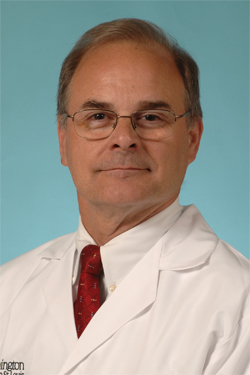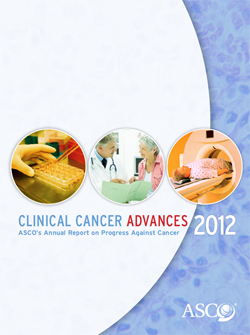Dec 04, 2012
 | |
| Dr. Bruce J. Roth |
In its broad design, the executive editors chose 21 renowned experts in specific fields of cancer research to act as section editors and choose the most important advances in that field during the 12-month period from October 2011 through September 2012. We placed an overarching framework on the report, having section editors categorize advances into “major” and “notable.” “Major” advances were those that were not only scientifically of the highest quality and real impact, but had already resulted in a peer-reviewed publication, and utilized a drug already approved by the FDA. “Notable” advances were those whose data were only available in abstract form, or utilized an agent not yet approved for use. These designations help structure what turns out to be a large amount of data into a more understandable form.
One of the most unique aspects of this document is its usability by a wide variety of audiences. One could imagine patients with a particular disease (and their caregivers) looking for a snapshot of important research that year in their disease. One could just as easily imagine oncologists overwhelmed by the volume of new data on every type of cancer each year searching for a synopsis provided by an independent expert in the field. It is also important to provide this type of information to lawmakers and the medically-oriented lay press. In this era of strong “anti-science” and “anti–intellectual” bias—which results in all of us being asked questions such as, “What are we getting for all this money in the war on cancer?”—this document answers that question in spades. I personally have also found this document useful in the education of hematology/oncology fellows. Each of us has seen (and probably been) that trainee with that deer-in-the-headlights look at the Annual Meeting, so completely overwhelmed by data they literally don’t know where to start.
 |
With increasing emphasis on mechanistic etiologies and treatments, we felt it was important to include a section on Tumor Biology recognizing that translational medicine overall, and precision medicine in particular, have finally arrived in the field of oncology and will only become more important with time. One could envision several years down the road replacing some disease-based sessions at the Annual Aeeting with “alk” or “mek” sessions. There is also a new section of Quality in Cancer Care, a rapidly evolving field for many reasons, and coincides with ASCO’s first thematic meeting on the subject.
Finally, a section entitled “The Policy Environment: ASCO in Action in 2012” summarizes important legislative decisions and initiatives for the year. We felt it was important to summarize ASCO’s position on major legislation, from the changes associated with the Affordable Care Act to the real threat of reduced funding for federally funded clinical research via sequestration.
I sincerely hope that you find this document useful and an ongoing resource for patient care. We are always open to suggestions for improvement, and look forward to your comments.
